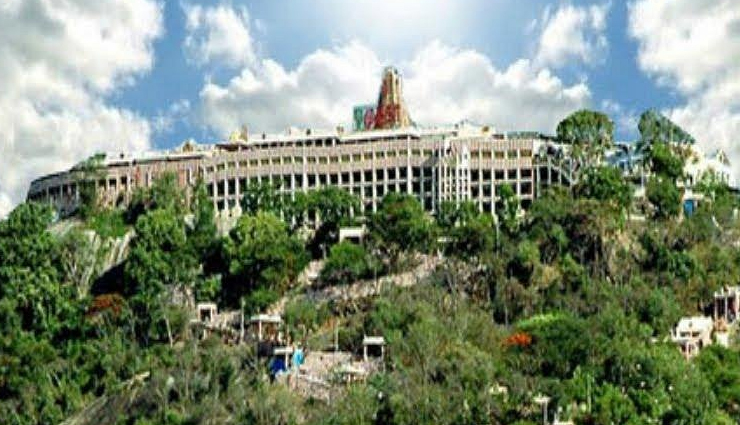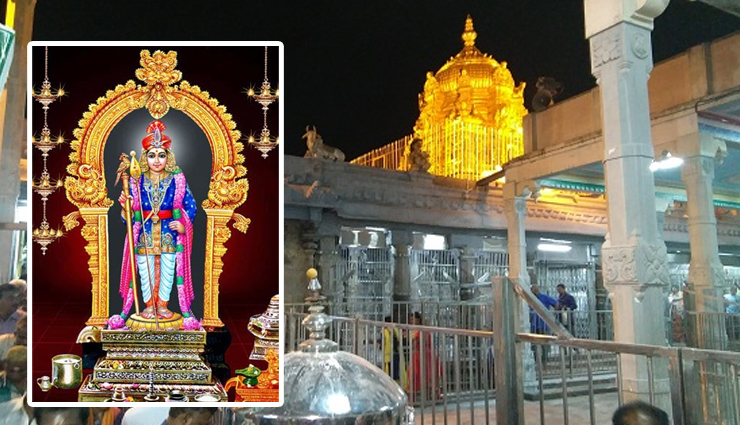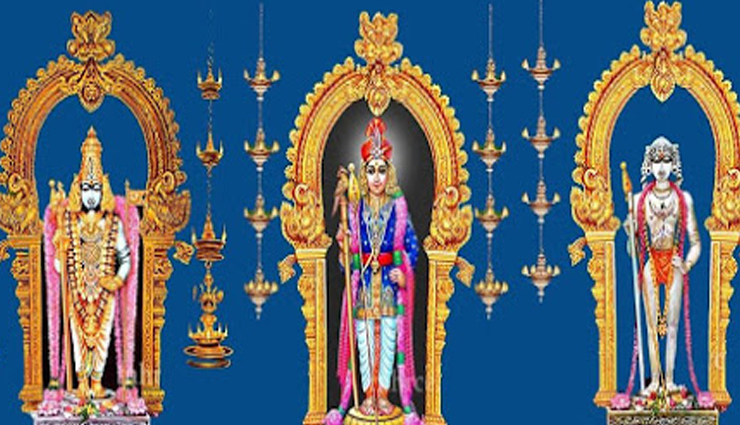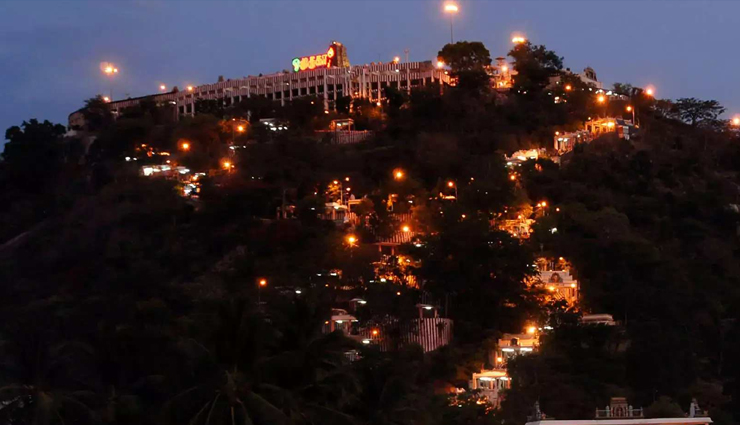History Of Palani Murugan, The Sacred Gem Of Dindigul
By: Priyanka Maheshwari Wed, 06 Sept 2023 12:50:42

Nestled in the foothills of Palani within the heart of Dindigul, you'll find the ancient Palani Murugan temple. This sacred site, also referred to as the Arulmigu Dandayudhapani Swami Temple, has been a magnet for millions of devotees for centuries. Its enduring allure continues to draw pilgrims from all corners of the globe, ensuring its significance for generations to come.
The legend
According to Hindu mythology, Sage Narada presented Lord Shiva with the Fruit of Knowledge, containing the elixir of wisdom. Lord Shiva intended to divide this fruit equally between his two sons, Ganesha and Murugan. However, Sage Narada strongly advised against cutting it. To resolve the dilemma, Lord Shiva devised a challenge: whoever could circumnavigate the world thrice would be granted the fruit. Eager to claim it, Lord Murugan embarked on his journey, riding on his peacock.
Meanwhile, the wise Ganesha, understanding the world to be represented by his divine parents, Lord Shiva and Goddess Shakti, began to circumambulate them. Impressed by his profound devotion, Lord Shiva bestowed the fruit upon Ganesha. Murugan, desiring maturity and wisdom, decided to embark on a journey of self-discovery and meditation atop the Palani hills.

An Odyssey against time
The origin of this temple remains shrouded in mystery, with no concrete evidence to establish its creation. According to Tamil Scriptures, the idol of Lord Murugan was said to have been crafted by the ancient Sage Bogar, although the exact timeline of this creation remains unspecified. Sage Bogar is believed to have used a unique mixture of nine poisonous substances, combined in a specific ratio to form an eternal medicine, to create the idol.
Over time, the idol suffered from consecutive thefts and neglect, leading to its fragmentation. Subsequently, the temple was constructed by order of a perumal king from the Chola Dynasty, somewhere between the second and fifth centuries AD. Remarkably, this temple has endured the test of time and the threat of external forces for centuries, while the once-mighty Chera, Chola, and Pandya dynasties have faded into history.

An Imperishable Architecture
From the central shrine, originally laid by the Chera dynasty, to the encircling ambulatory, you can still discern traces of Pandya architectural influence. Notably, the Pandya insignia, symbolized by two fishes, remains visible. The walls of the sanctum are adorned with inscriptions in Tamil scripture. Above the sanctum, there rises a magnificent golden pyramid, a Gopuram in the South Indian tradition, which marks the temple's boundaries. This Gopuram is adorned with numerous sculptures of Lord Kartikeya and various deities associated with him.
Within the first inner ambulatory, which encircles the core of the temple, you'll find shrines dedicated to Shiva, Parvati, and the revered Sage Bhogar, who is said to have crafted the primary idol. Moving beyond the precinct, you'll come across the venerated shrine of Ganpati and the resplendent golden chariot of Lord Murugan.
The mystics of the temple
The temple's origins remain shrouded in mystery, devoid of concrete evidence. According to Tamil Scriptures, it is suggested that the idol of Lord Murugan was consecrated by Sage Bogar, who skillfully fashioned it using a mixture of nine poisonous substances, with no specific timeline provided for this ancient creation. This unique concoction was believed to possess eternal medicinal properties when combined in precise proportions.
Unfortunately, the idol endured a series of thefts and periods of neglect, resulting in its fragmentation. Subsequently, the temple was constructed under the directive of a perumal king from the Chola Dynasty, at some point between the second and fifth centuries AD. Remarkably, this temple has withstood the test of time and the threat of external forces for centuries, while the once-mighty Chera, Chola, and Pandya dynasties have faded into history.

SWAMI SIVANANDA
Swami Siva, a remarkable prodigy and the most recent among the swamis, is a widely recognized mystic among his disciples and the devoted followers of Lord Murugan. Foretold by sadhu swamis to embark on a spiritual journey from an early age, he began to tread the path toward becoming a Siddha himself.
As the days unfolded, with advancing age and unwavering dedication to knowing himself through his devotion to Lord Murugan, the young boy matured into a full-fledged sanyasi and a revered spiritual guide. He devoted his life to sharing his wisdom and using his knowledge to benefit others, steadfast in his commitment to his ultimate deity.
Years passed, and the time arrived for sadhu Swamy to merge with the divine, his final union with God. In the end, with the resounding chant of Lord Murugan on his lips, he peacefully departed. In folklore, Swami's name transformed into a legend, a testament to his enduring devotion to Kartikeya.
SAINT AARUMUGATHAMBIRAN
Saint Aarumugathambiran, perhaps the most renowned among the siddhas and shrouded in mystery, is believed to have possessed mystical powers, as per South Indian folklore. During his time, many of Lord Muruga's devotees had to traverse through Nalkasi, near Ottenchattiram, a river followed by a forest, to reach the Palani temple. Ninkasi was among the rivers leading to Palani. On one occasion, devotees had to cross this river during a time when its waters overflowed its banks. The villagers eagerly awaited Arumuganar, hoping he would facilitate their passage.
As Aarumuganar approached, he sprinkled sacred ash upon the river, and his staff gently touched the surface, miraculously parting the waters and creating a path for the devotees to cross. To this day, the temple authorities at Palani anticipate the arrival of Arumuganar, hoping he will perform the ucchi kaala poojai at noon. Such is the enduring fame of Arumuganar and his Kavadi.
Legend also has it that he once made the fish in a curry come to life and leap out of the dish.

The Scientific analysis
Throughout the ages, granite stones have remained the primary choice for crafting idols. Renowned for their immense strength and for containing the fundamental natural elements of creation—earth, water, fire, air, and ether—granite has been a favored material. The great sage Bogar, in collaboration with 17 other siddhars, embarked on the creation of the idol. This endeavor involved formulating a unique mixture known as "Nava Paashaanam," a precious blend derived from the medicinal properties of 4498 rare herbs.
This amalgam, believed to be a carefully crafted combination of nine toxic metals, transformed the inherent power of these elements into a solid form, akin to granite. The resulting product not only possessed medicinal and therapeutic properties but also held enduring value.As the Kaliyuga era, which dates back approximately 4900 years before our current timeline, began, Lord Muruga's idol was installed atop the sacred mountain and became an object of worship for centuries to come. However, the unfortunate reality today is that the idol has become fragile and is at risk of collapsing at any moment. Around a century ago, a Siddha residing in Palani, who also served as one of the temple trustees, purportedly scraped material from the back of the idol and diluted it to create medicinal products for commercial purposes.
Despite investigations conducted by renowned mineralogists, the mineralogy and composition of the idol remained an enigma. Even advanced scientific tools such as the Perkin-Elmer 707 atomic absorption spectrophotometer failed to identify its trace elements. It was concluded that the divine structure of the idol remained impenetrable to even the most modern scientific analyses.
A Rich tradition
Palani embodies simplicity while being steeped in the captivating mystique of its enduring traditions, which continue to be upheld to this day.
Numerous festivals are closely associated with the Palani temple, and here's an overview of some of them:
* Thai Poosam:
Devotees from Tamil Nadu embark on a sacred pilgrimage to Palani by foot, a journey known locally as "Pada Yathra." It commences with the hoisting of a ceremonial flag at Perianayagiamman, followed by a grand procession spanning ten days.
* Panguni Uthiram:
Celebrated over a ten-day period, this festival sees devotees bringing offerings that include holy water, sugar, coconuts, and more. Traditional dances like "Oyilattam," "Thappattam," "Dhidumattam," "Velanattam," and "Samiyattam" accompanied by folk songs are enjoyed by all.
* Chitra Pournami:
A ten-day festival celebrated at the Arulmigu Lakshminarayana temple. Additionally, Lord Murugan, along with Valli and Deivanai, embarks on a procession inside a silver chariot at the Periyanayakiamman Temple.
* Agni Nakshatram:
This unique festival spans seven days. Devotees undertake a sacred journey on foot across the hill in the early morning hours, a time considered auspicious for worshipping the Hill temple.
* Vaikaasi Festival:
This ten-day celebration features daily processions, culminating in a grand car procession on the 10th day. It is observed in all Murugan temples.
* Kandhar Shasti:
This festival revolves around the mythological tale of Lord Muruga defeating demons. On this special occasion, the Lord descends from the hill, symbolizing his victory over the demons, and then ascends again.





